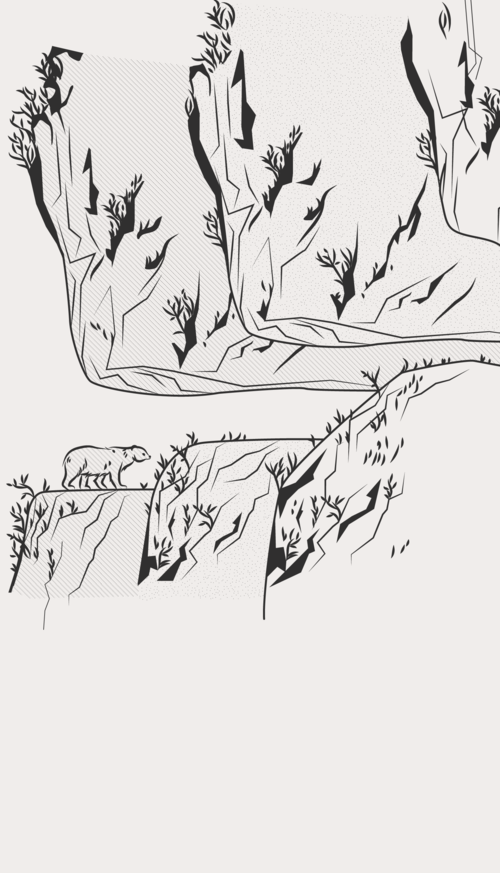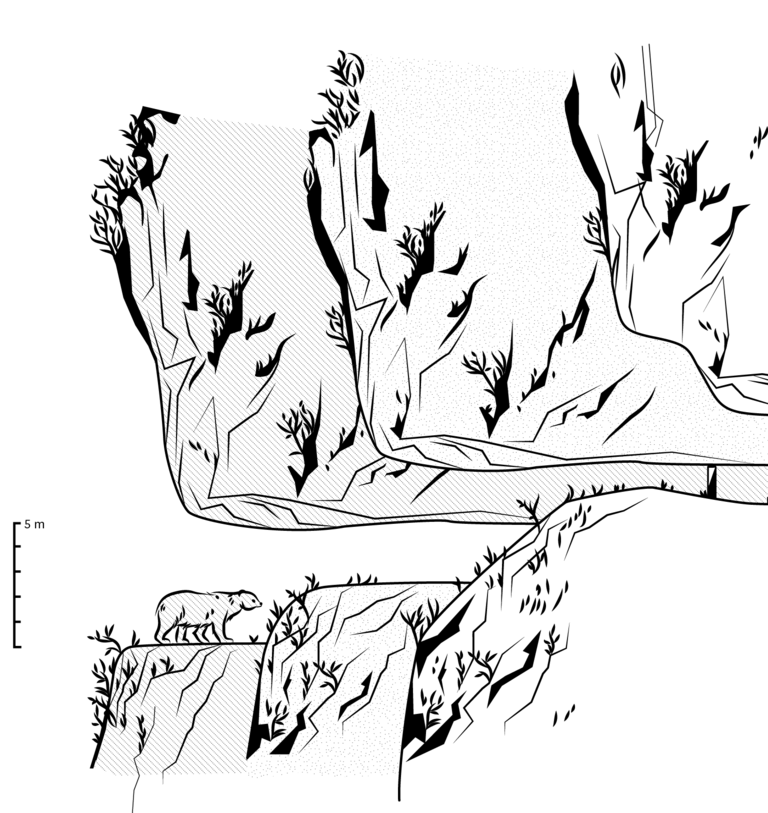In the last 600,000 or so years, many significant fluctuations in climate occurred in the Alpine region, with some lasting 10,000 years. Periods of extreme cold, known as ice ages, alternated with warm interglacial periods. Today, we are living in an interglacial period.
During ice ages, the largest part of what is today Switzerland was covered with glacial ice, which was between 500 and 1200 meters thick in the Alpine valleys.
In the last ice age, around 115,000 years to 10,000 years ago, the Saentis glacier advanced ever further into the valleys of the Alpstein. Its highest point is attested to by the little moraine found on some slopes. The powerful Rhine glacier then flowed away across lower passes, absorbed the Saentis glacier and, with the exception of individual peaks, covered the entire region up to Lake Constance and beyond.
However, the Elbenalp lay consistently above the ice edge.

Exposed to the weather
As the rock faces above the ice edge were exposed to wind, weather, and constant freeze-thaw cycles, they were very severely weathered away and underwent marked changes over the millennia.
The openings to the Wildkirchli caves were once much further forward. Water was always flowing in the finest cracks of the rocks, with frozen rocks being jettisoned into the valley or onto the cave floor, to remain there as rubble and clay.
Over the course of millennia, a five-meter layer of earth collected in the cave, while the cave ceiling was constantly being raised. The rhythms of these fluctuations in climate are easy to discern from the various layers of earth.
Weathering has caused a deep fissure in a section of the earth layer in the front part of the cave, which is surely a reason as to why no traces of hearths have been found in the Wildkirchli.
Naturally, the process continues today.





